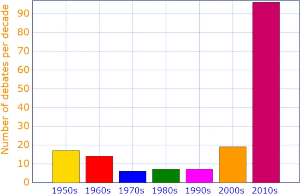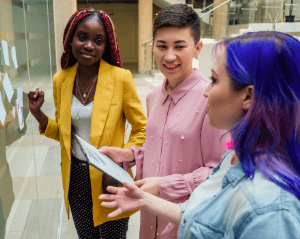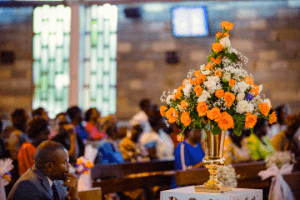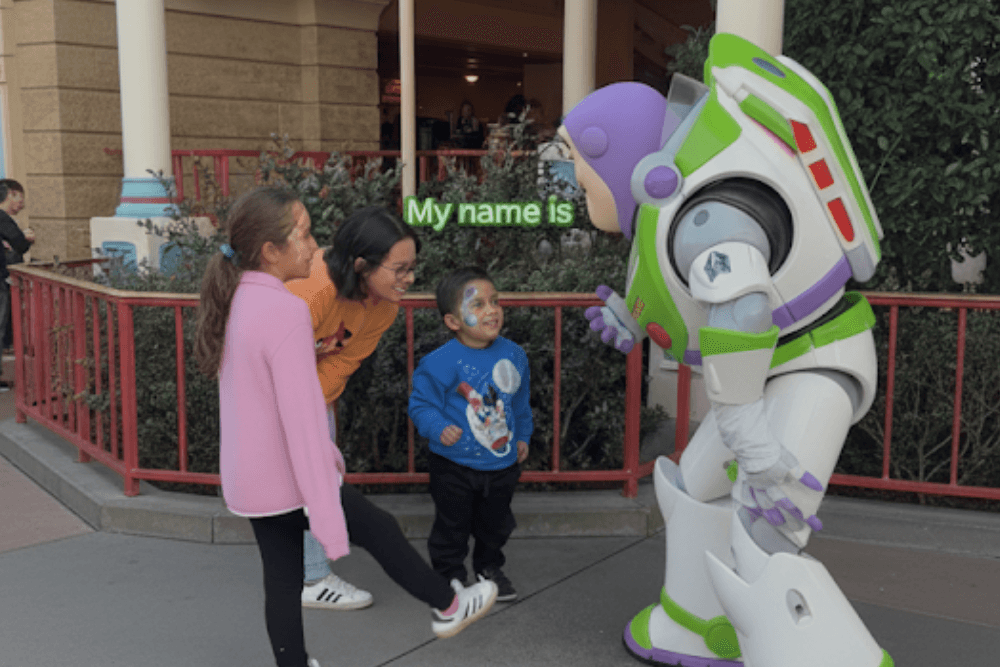As we track the developments in the ASL and Deaf community landscape, this week stood out for its remarkable geographic diversity and strategic sophistication. From viral theatrical moments in the United States to groundbreaking religious inclusion in Nigeria, the stories emerging from late July reveal a global movement that’s increasingly confident, culturally assertive, and technologically savvy.
What strikes most about this collection of stories is how they collectively demonstrate the maturation of Deaf advocacy, moving beyond simple requests for accommodation toward proactive leadership in designing inclusive systems. Whether it’s students co-creating campus policies or congregants establishing entirely sign-language-centered worship, we’re witnessing communities that refuse to wait for others to solve accessibility challenges.
Hamilton ASL Interpreter Goes Viral, Sparks Access Talk
An electrifying ASL interpretation of Hamilton by Rochester Institute of Technology alumna Shiann Cook captured national attention, transforming Lin-Manuel Miranda‘s rapid-fire lyrics into a visual spectacle that left both Deaf and hearing audiences mesmerized. Cook’s performance, featuring dynamic hip-hop handshapes and expressive storytelling, demonstrated how skilled interpretation elevates theatrical accessibility from accommodation to artistry.
The viral moment, shared across social media platforms and featured on ABC News, sparked broader conversations about communication access in entertainment venues. Cook emphasized hoping the visibility would inspire more people to pursue interpreting careers, addressing critical nationwide shortages of qualified professionals. Her performance illustrated how expert interpretation captures not just words but rhythm, emotion, and cultural nuance.
However, the spotlight also highlighted ongoing challenges within the interpreting profession. Advocates stressed the distinction between performance interpretation and certified communication access, noting that recent incidents of unqualified individuals providing inadequate “interpretation” at public events underscore public misunderstanding of professional standards. The visibility creates educational opportunities about interpreting as a licensed profession requiring extensive training and adherence to ethical codes.
The success reflects growing recognition of ASL as a rich, visual language capable of sophisticated artistic expression. For theaters nationwide, Cook’s viral performance provides compelling evidence that accessibility investments enhance rather than detract from artistic experiences. The moment also demonstrates how Deaf professionals can leverage mainstream attention to advocate for improved access and professional recognition across entertainment industries.
Sign Language Advocacy Guide Promotes Student Voice
The National Deaf Center released a comprehensive guide advocating for student advisory boards as transformative tools for campus accessibility. The initiative moves beyond traditional accommodation models toward proactive, student-designed inclusion policies. Rather than individual students repeatedly requesting access, these paid advisory positions embed Deaf and disabled perspectives directly into institutional decision-making processes.
The model addresses persistent gaps in higher education accessibility, where students often face bureaucratic barriers and tokenistic consultation. By formalizing student expertise through compensation and structured feedback mechanisms, universities can shift from reactive compliance to authentic community partnership. Early adopters report improved policies around interpreter scheduling, classroom technology, and campus event accessibility.
The timing aligns with growing recognition that Deaf students possess unique insights essential for effective policy development. Traditional approaches often rely on administrators making assumptions about student needs, frequently missing cultural nuances and practical barriers. The advisory board framework positions students as co-creators rather than passive recipients of services.
This development reflects broader advocacy trends emphasizing community leadership in designing solutions. For universities facing legal pressure around accessibility compliance, the model offers both risk mitigation and genuine cultural change. The approach could influence institutional policies nationwide, particularly as federal disability rights enforcement faces uncertainty under current political leadership. Success stories from pilot programs demonstrate measurable improvements in student satisfaction and institutional accessibility culture.
Nigerian Deaf Church Proves Faith Transcends Sound
A remarkable congregation in Lagos, Nigeria, is redefining spiritual worship by conducting entire services exclusively in sign language. Pastor Remi Akinremi leads a community of 50-60 Deaf worshippers who gather weekly for sermons, songs, and fellowship without any spoken words. “With sign language, God also understands us,” Akinremi explained to Associated Press reporters, highlighting how the church creates a sanctuary free from the societal stigma often faced by disabled individuals in Nigeria.
The church represents a powerful model of Deaf-led religious spaces, where animated ASL sermons replace traditional vocal delivery and drumbeats provide rhythmic “amens” felt through vibration rather than heard. This inclusive approach challenges conventional notions of worship while affirming that spiritual expression transcends auditory experience. The congregation serves as both a place of faith and cultural preservation, where Nigerian Sign Language flourishes alongside religious practice.
Google Unveils SignTown AI for Language Learning
Google launched SignTown, an ambitious AI-powered web application designed to teach sign language through real-time gesture recognition technology. The platform, part of Project Shuwa, currently supports Japanese Sign Language and Hong Kong Sign Language, utilizing MediaPipe AI and TensorFlow.js to analyze user movements and provide instant feedback on signing accuracy.
The technology represents a significant corporate investment in accessibility innovation, running entirely within web browsers without requiring app downloads or specialized hardware. Users can practice basic vocabulary and simple sentences while receiving algorithmic assessment of their hand positions, movements, and timing. Google positioned the tool as democratizing sign language education, particularly in regions with limited access to human instructors.
However, the announcement sparked nuanced discussions within Deaf academic communities about AI’s role in language preservation and transmission. Critics emphasize that sign languages encompass complex grammar, facial expressions, and cultural context that current AI cannot adequately capture or teach. The debate reflects broader tensions around technological solutions to accessibility challenges. While AI tools offer scalability and convenience, Deaf advocates stress the importance of maintaining linguistic integrity and cultural authenticity.
For Google, the project demonstrates technical capabilities while raising questions about meaningful community engagement in development processes. The platform’s ultimate success will likely depend on its ability to acknowledge limitations while supporting rather than undermining traditional sign language education methods.
India Study Calls for Sign Language in Schools

A comprehensive Cambridge University study issued urgent recommendations for India’s education system to embrace Indian Sign Language (ISL) in schools, highlighting how current “oralist” approaches systematically exclude millions of Deaf children from meaningful education. Dr. Abhimanyu Sharma‘s research documents how emphasis on lip-reading over signing contributes to devastating dropout rates among India’s estimated 18 million Deaf citizens.
The paper challenges decades of educational policy prioritizing speech therapy and oral communication over visual language instruction. Current approaches force Deaf students to navigate academic content in their non-native language while being denied access to ISL, their natural communication method. This creates compounding disadvantages as students struggle with both language barriers and academic concepts simultaneously.
Sharma’s recommendations include official government recognition of ISL, comprehensive teacher training programs, and investment in Deaf-led educational institutions. The research emphasizes that linguistic accessibility directly correlates with educational outcomes, employment opportunities, and social integration. Countries with strong sign language recognition policies demonstrate significantly better outcomes for Deaf citizens across multiple metrics.
The findings resonate globally as education systems worldwide grapple with inclusive policy development. India’s scale amplifies both the challenge and potential impact of policy changes.
The Evolution of Advocacy in Action
Late July 2025 showcased the global scope and sophistication of contemporary Deaf advocacy, spanning four continents and multiple sectors. The period highlighted a strategic shift from reactive accommodation toward proactive community leadership, exemplified by student advisory boards and Deaf-led religious institutions. Technology developments reveal growing corporate investment in AI accessibility tools, though community responses emphasize the critical importance of authentic cultural engagement over purely technical solutions.
Educational themes dominated international advocacy, from India’s systemic reform needs to campus-level policy innovation in the United States. These developments reflect mounting recognition that sign language access constitutes a fundamental educational right rather than optional accommodation. Meanwhile, viral cultural moments like Hamilton’s ASL interpretation demonstrate how artistic excellence can advance public understanding while creating platforms for professional advocacy.
The convergence of grassroots organizing, institutional innovation, and technological development suggests a maturing advocacy ecosystem capable of addressing both immediate access needs and long-term systemic change. However, ongoing challenges around professional standards, cultural authenticity, and policy implementation underscore the continued need for vigilant community leadership in shaping these developments.








